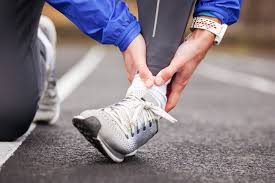When we think of what makes a great athlete, we often picture grueling training sessions, strict diets, mental resilience, and natural talent. But one of the most overlooked pieces of the athletic puzzle—one that literally supports every step is proper footwear. The right shoes don’t just boost performance; they can make the difference between a long, successful career and a painful early exit due to injury.
More Than Just Shoes: Why Footwear Matters
Footwear is often treated as an afterthought something athletes replace when it looks worn out or doesn’t match the uniform. But athletic shoes are precision tools. Just like a tennis racket or a pair of boxing gloves, they’re designed to meet the specific physical demands of the sport and the individual wearing them.
Athletes rely on their feet for explosive movement, balance, and stability. Poor-quality shoes, or even good ones that are poorly suited to an individual’s biomechanics, can lead to wear and tear on joints, ligaments, and muscles. Over time, this wear can turn into chronic injuries that sideline even the most promising talents.
The Science Behind the Shoe
Modern athletic footwear is built on sports science and biomechanics. Every element from the cushioning under the heel to the structure of the midsole and the grip on the outsole serves a purpose.
- Cushioning absorbs shock and reduces impact stress on joints.
- Arch support prevents overpronation or supination (excessive inward or outward rolling of the foot).
- Heel counters stabilize the rear of the foot, improving control and balance.
- Outsoles offer grip specific to the surface be it a hardwood court, grassy field, or synthetic track.
What this means is that running shoes are vastly different from soccer cleats or basketball high-tops not just in looks, but in functionality.
Common Injuries from Improper Footwear
When footwear fails, injuries follow. These are some of the most common issues linked to inappropriate shoes:
- Shin Splints: Often caused by poor shock absorption in running shoes.
- Achilles Tendonitis: Exacerbated by shoes with insufficient heel lift or poor heel support.
- Plantar Fasciitis: Linked to flat shoes lacking arch support.
- Ankle Sprains: Common in court sports when lateral movement is unsupported.
- Knee and hip pain: Can stem from poor alignment due to worn or inappropriate soles.
Many of these injuries develop slowly. Athletes may push through discomfort without realizing their shoes are the root cause until it’s too late.
One Size Doesn’t Fit All
One of the most common mistakes athletes make is assuming that all athletic shoes are created equal. Even within the same sport, personal factors come into play:
- Foot shape and arch type (flat, neutral, high)
- Gait pattern (how the foot moves during walking or running)
- Body weight
- Playing surface (grass, turf, court, track)
Athletes should get professionally fitted, ideally through gait analysis and pressure mapping, to understand what their feet really need. Some may require custom orthotics or specific heel-to-toe drops to support natural movement and reduce injury risk.
Rotation and Replacement: Shoe Maintenance Matters
Shoes don’t last forever especially for athletes who train hard. The cushioning materials break down with use, often before visible signs of wear appear.
As a general rule:
- Running shoes should be replaced every 300–500 miles
- Court shoes (e.g., for basketball or tennis) may need replacing every 3–6 months depending on intensity of use
- Cleats often wear down faster due to outdoor conditions and should be checked frequently for sole integrity
Rotating between multiple pairs and keeping shoes dry and clean also extends their lifespan and performance.
Proper Footwear: A Long-Term Investment
At the elite level, even marginal gains matter. But injury prevention isn’t just about elite athletes. Weekend warriors, high school players, and fitness enthusiasts all benefit from better footwear. Think of it this way: investing in the right pair of shoes now might save you thousands in medical bills—or weeks lost to rehab later.
Don’t Step Into the Game Without Thinking About Your Feet
The path to athletic success is paved with smart decisions. One of the smartest and simplest is to make proper footwear a priority. With the right shoes, athletes can run faster, train harder, and most importantly, play longer. Because when your feet are protected, your entire body performs better.
In the game of inches, proper footwear might just be your best defense.

